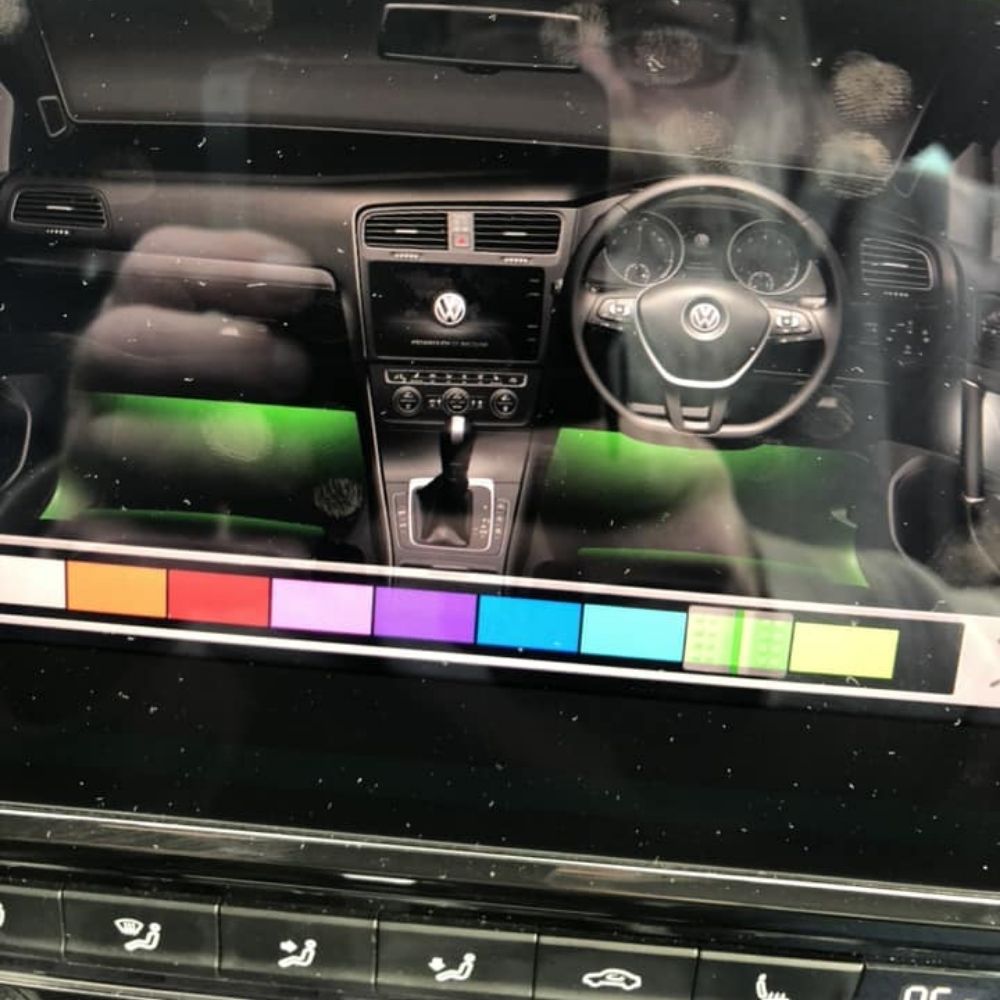
What Do Audi A5 Fault Codes Really Indicate?
Contents
- 1. What Are Common Audi A5 Fault Codes and Their Meanings?
- 2. How Can I Read Audi A5 Diagnostic Trouble Codes?
- 3. What Are the Symptoms Associated with Specific Audi A5 Fault Codes?
- 4. How Do I Diagnose the Root Cause of an Audi A5 Fault Code?
- 5. What Tools Are Needed to Fix Audi A5 Fault Codes?
- 6. What Are the Step-by-Step Instructions to Repair Common Audi A5 Fault Codes?
- 7. How Can AutoExplain.com Help Me with Audi A5 Fault Codes Remotely?
- 8. What Is the Cost of Diagnosing and Repairing Audi A5 Fault Codes?
- 9. How Do I Prevent Audi A5 Fault Codes from Recurring?
- 10. What Are Audi A5-Specific Fault Codes That Are Not Common in Other Cars?
- 11. How Does the Audi A5’s Year and Model Affect the Fault Codes?
- 12. What Is the Role of the ECU in Generating Audi A5 Fault Codes?
- 13. How Does Transmission Problems Show up in Audi A5 Fault Codes
- 14. What Are the Most Common Electrical Faults in Audi A5 and Their Codes
- 15. Can Faulty Sensors Cause Multiple Fault Codes in an Audi A5?
- 16. How Does AdBlue System Failure Affect Audi A5 Fault Codes?
- 17. What Are Common Fuel System Related Fault Codes in Audi A5?
- 18. How to Clear Audi A5 Fault Codes?
- 19. What Are the Security System Fault Codes in Audi A5?
- 20. How Does a Bad Catalytic Converter Show Up As A Fault Code in Audi A5?
- 21. What Are the Common Fault Codes Associated with Vacuum Leaks in Audi A5?
- 22. How Does a Faulty Fuel Injector Affect the Fault Codes in an Audi A5?
- 23. What Fault Codes Are Related to ABS Issues in Audi A5?
- 24. How Does a Failing Mass Air Flow (MAF) Sensor Affect Audi A5 Fault Codes?
- 25. What Are Common Fault Codes Related To The Ignition System On The Audi A5?
Audi A5 Fault Codes can be daunting, but understanding them is the first step to diagnosing and resolving issues with your vehicle. These codes, generated by the car’s On-Board Diagnostic (OBD) system, pinpoint potential problems, and with the right knowledge and support, you can get your Audi A5 back on the road quickly. Let AutoExplain.com guide you through the process of understanding and addressing these fault codes for optimal performance, helping you identify engine problems, transmission issues, and electrical faults efficiently.
1. What Are Common Audi A5 Fault Codes and Their Meanings?
Common Audi A5 fault codes include P0011, P0101, and P0300, indicating issues like camshaft timing, mass airflow, and random misfires, respectively. These diagnostic trouble codes (DTCs) are triggered when the car’s sensors detect irregularities in the engine, transmission, or other systems. Understanding these common issues is crucial for effective troubleshooting.
- P0011: “A” Camshaft Position Timing Over-Advanced or System Performance (Bank 1). This can be caused by a faulty camshaft variable timing solenoid, low engine oil level, incorrect engine timing, or a worn timing chain.
- P0101: Mass Air Flow (MAF) Sensor Range/Performance. This could be due to large vacuum leaks, a split intake air boot or PCV hose, a defective MAF sensor, or a dirty MAF sensor wire.
- P0300: Random/Multiple Cylinder Misfire Detected. This can be triggered by worn spark plugs, ignition wires, coils, vacuum leaks, low fuel pressure, or a defective MAF sensor.
Recognizing these common codes and their potential causes can help you or your technician narrow down the problem and implement the appropriate repairs.
2. How Can I Read Audi A5 Diagnostic Trouble Codes?
To read Audi A5 diagnostic trouble codes, use an OBD-II scanner, which plugs into your car’s OBD-II port, typically located under the dashboard. The scanner retrieves stored codes, providing valuable insights into potential issues.
Here’s a step-by-step guide:
- Locate the OBD-II Port: This is usually found under the dashboard on the driver’s side.
- Plug in the OBD-II Scanner: Ensure the scanner is securely connected.
- Turn on the Ignition: Turn the key to the “on” position without starting the engine.
- Read the Codes: Follow the scanner’s instructions to retrieve and display the fault codes.
- Record the Codes: Write down each code for further research and diagnosis.
Having access to this information empowers you to make informed decisions about your car’s maintenance and repairs. If you need assistance interpreting the codes, AutoExplain.com offers expert remote support to help you understand the underlying issues.
3. What Are the Symptoms Associated with Specific Audi A5 Fault Codes?
Symptoms associated with Audi A5 fault codes vary, but common signs include a check engine light, decreased engine performance, rough idling, and poor fuel economy. Each code corresponds to specific symptoms that can help pinpoint the problem.
Here’s how symptoms correlate with specific codes:
- P0011 (Camshaft Timing Issue): Rough idling, decreased engine power, and potential stalling.
- P0101 (MAF Sensor Issue): Poor acceleration, stalling, and a noticeable decrease in fuel efficiency.
- P0300 (Misfire): Rough running engine, vibrations, and a flashing check engine light.
Being attentive to these symptoms and relating them to potential fault codes can expedite the diagnostic process.
4. How Do I Diagnose the Root Cause of an Audi A5 Fault Code?
Diagnosing the root cause of an Audi A5 fault code involves a systematic approach, starting with verifying the code, inspecting related components, and using diagnostic tools to pinpoint the issue. Accurate diagnosis requires expertise and attention to detail.
Here’s a detailed process:
- Verify the Code: Use an OBD-II scanner to confirm the fault code and check for any additional codes.
- Research the Code: Consult repair manuals or online databases to understand the potential causes and related components.
- Inspect Related Components: Check wiring, sensors, and connectors for damage, corrosion, or loose connections.
- Use Diagnostic Tools: Use tools like multimeters, oscilloscopes, and pressure testers to assess the functionality of sensors and components.
- Perform Tests: Conduct specific tests recommended for the fault code, such as vacuum leak tests or fuel pressure tests.
- Analyze the Data: Interpret the data from diagnostic tools to identify the faulty component or system.
For complex issues, AutoExplain.com provides remote diagnostic services, connecting you with experienced technicians who can guide you through the process and help you accurately identify the root cause.
5. What Tools Are Needed to Fix Audi A5 Fault Codes?
Fixing Audi A5 fault codes often requires a variety of tools, including an OBD-II scanner, multimeter, socket set, wrenches, and specialized tools for specific repairs. Having the right tools ensures efficient and accurate repairs.
Essential tools include:
- OBD-II Scanner: To read and clear fault codes.
- Multimeter: To test electrical circuits and sensor outputs.
- Socket Set and Wrenches: For removing and installing components.
- Scan Tools: For advanced diagnostics and live data analysis.
- Vacuum Tester: To check for vacuum leaks.
- Fuel Pressure Tester: To assess fuel system performance.
Investing in quality tools can save time and money in the long run. If you’re unsure which tools you need, AutoExplain.com can provide guidance and recommendations based on the specific fault code and repair requirements.
6. What Are the Step-by-Step Instructions to Repair Common Audi A5 Fault Codes?
Repairing common Audi A5 fault codes involves specific steps tailored to the code and its underlying cause, such as replacing a faulty sensor, fixing a vacuum leak, or updating software. Following a detailed repair procedure is essential for a successful outcome.
Here are the general steps for some common codes:
P0011 (Camshaft Timing Issue):
- Check Engine Oil: Ensure the oil level is correct and the oil is clean.
- Inspect the Camshaft Solenoid: Check for damage or debris and test its functionality with a multimeter.
- Replace the Solenoid: If faulty, replace the camshaft variable timing solenoid.
- Check Timing Components: Inspect the timing chain and gears for wear or damage.
P0101 (MAF Sensor Issue):
- Inspect for Vacuum Leaks: Check all vacuum hoses and connections for leaks.
- Clean the MAF Sensor: Use a MAF sensor cleaner to remove any dirt or debris.
- Test the MAF Sensor: Use a multimeter to check the sensor’s output voltage.
- Replace the MAF Sensor: If faulty, replace the MAF sensor.
P0300 (Misfire):
- Inspect Spark Plugs: Check for wear, damage, or carbon buildup.
- Check Ignition Coils: Test each coil with a multimeter to ensure proper function.
- Inspect Vacuum Lines: Look for any leaks in the vacuum system.
- Check Fuel Injectors: Ensure the fuel injectors are clean and functioning correctly.
For detailed, step-by-step instructions specific to your Audi A5’s fault code, AutoExplain.com offers comprehensive repair guides and remote support to assist you throughout the process.
7. How Can AutoExplain.com Help Me with Audi A5 Fault Codes Remotely?
AutoExplain.com can remotely assist with Audi A5 fault codes by providing expert diagnostics, step-by-step repair guidance, ECU programming, and access to a team of experienced technicians. Our remote services offer a convenient and cost-effective solution for resolving complex automotive issues.
Here’s how we can help:
- Expert Diagnostics: Our technicians can remotely access your car’s diagnostic data to accurately identify the root cause of the fault code.
- Step-by-Step Guidance: We provide detailed repair instructions tailored to your specific fault code and vehicle model.
- ECU Programming: We offer remote ECU programming and software updates to address software-related issues.
- Technical Support: Our team is available via WhatsApp, email, and online platforms to answer your questions and provide real-time support.
By leveraging AutoExplain.com’s remote services, you can avoid costly trips to the mechanic and get your Audi A5 back on the road quickly and efficiently.
8. What Is the Cost of Diagnosing and Repairing Audi A5 Fault Codes?
The cost of diagnosing and repairing Audi A5 fault codes varies depending on the complexity of the issue, the parts required, and the labor involved. Diagnosing can range from $75 to $150, while repairs can range from a simple sensor replacement to more complex engine or transmission work.
Here’s a general cost breakdown:
- Diagnosis: $75 – $150 (can be reduced with AutoExplain.com’s remote diagnostic services)
- Sensor Replacement: $100 – $300
- Vacuum Leak Repair: $50 – $200
- ECU Programming: $150 – $500
- Engine Repair: $500 – $5000+ (depending on the severity)
Using AutoExplain.com can help reduce costs by providing accurate remote diagnostics and step-by-step repair guidance, minimizing the need for expensive in-person services.
9. How Do I Prevent Audi A5 Fault Codes from Recurring?
Preventing Audi A5 fault codes from recurring involves regular maintenance, using high-quality parts, addressing issues promptly, and staying updated with software updates. Proactive care can help avoid future problems.
Here are some preventative measures:
- Regular Maintenance: Follow the manufacturer’s recommended maintenance schedule, including oil changes, filter replacements, and spark plug inspections.
- Use High-Quality Parts: Use OEM or reputable aftermarket parts to ensure reliability and longevity.
- Address Issues Promptly: Don’t ignore warning signs or fault codes; address them as soon as possible to prevent further damage.
- Stay Updated with Software: Keep your car’s software updated to ensure optimal performance and compatibility.
- Proper Driving Habits: Avoid harsh driving conditions that can strain the engine and other components.
By implementing these preventative measures, you can keep your Audi A5 running smoothly and minimize the likelihood of fault codes.
10. What Are Audi A5-Specific Fault Codes That Are Not Common in Other Cars?
Audi A5-specific fault codes, often starting with “P1,” relate to proprietary systems like the Audi Multi Media Interface (MMI) or advanced driver-assistance systems (ADAS). These codes require specialized knowledge and diagnostic tools.
Examples of Audi-specific codes include:
- P1647: Oil Pressure Switch Malfunction
- P1504: Air Intake Leakage
- P1025: Mass Air Flow Sensor Implausible Signal
These codes are less common in other car brands because they are tied to Audi’s unique engineering and technology.
11. How Does the Audi A5’s Year and Model Affect the Fault Codes?
The Audi A5’s year and model significantly affect the fault codes due to variations in technology, engine types, and electronic systems. Newer models may have more sophisticated systems, leading to different or more specific fault codes.
- Older Models: May have simpler engine management systems with fewer sensors, resulting in fewer and more generic fault codes.
- Newer Models: Equipped with advanced systems like ADAS, hybrid powertrains, and complex infotainment, leading to a broader range of fault codes.
For example, a 2010 Audi A5 might have different codes related to its 2.0T engine compared to a 2020 model with a more advanced turbocharged engine and hybrid components.
12. What Is the Role of the ECU in Generating Audi A5 Fault Codes?
The Engine Control Unit (ECU) plays a central role in generating Audi A5 fault codes by monitoring various sensors and systems throughout the vehicle. When the ECU detects a deviation from normal operating parameters, it triggers a fault code to alert the driver and technicians.
Here’s how the ECU functions in this process:
- Sensor Monitoring: The ECU receives data from numerous sensors, including those measuring temperature, pressure, airflow, and speed.
- Data Analysis: The ECU compares the sensor data against pre-programmed values and algorithms.
- Fault Detection: If a sensor reading falls outside the acceptable range, the ECU detects a fault.
- Code Generation: The ECU generates a specific fault code corresponding to the detected issue.
- Warning Light Activation: The ECU activates the check engine light or other warning lights on the dashboard.
- Data Storage: The ECU stores the fault code in its memory, allowing technicians to retrieve it using an OBD-II scanner.
13. How Does Transmission Problems Show up in Audi A5 Fault Codes
Transmission problems in Audi A5 models manifest through specific fault codes, indicating issues with shift solenoids, gear ratios, or the transmission control module (TCM). These codes help diagnose mechanical and electronic failures within the transmission system.
Common transmission-related fault codes include:
- P0700: Transmission Control System Malfunction.
- P0730: Incorrect Gear Ratio.
- P0841: Transmission Fluid Pressure Sensor/Switch “A” Circuit Range/Performance.
These codes can indicate a range of problems, from low transmission fluid to more severe issues like a failing TCM.
14. What Are the Most Common Electrical Faults in Audi A5 and Their Codes
Common electrical faults in Audi A5 models include issues with the battery, alternator, wiring harnesses, and sensors, each generating specific fault codes that aid in diagnosis and repair.
Examples of common electrical fault codes:
- P2500: Charging System Voltage Low.
- U0100: Lost Communication With Engine Control Module/Powertrain Control Module “A”.
- B10AE: Left Front Side Airbag Sensor Circuit.
These codes can result from various factors, such as corrosion, damaged wiring, or failing components.
15. Can Faulty Sensors Cause Multiple Fault Codes in an Audi A5?
Yes, faulty sensors can indeed cause multiple fault codes in an Audi A5, as one malfunctioning sensor can affect related systems and trigger a cascade of errors.
For example:
- A faulty mass airflow (MAF) sensor can cause codes related to fuel trim, oxygen sensor performance, and engine misfires.
- A malfunctioning oxygen sensor can affect the air-fuel mixture, leading to codes related to catalytic converter efficiency and fuel economy.
Identifying the primary faulty sensor is crucial to resolving all related fault codes.
16. How Does AdBlue System Failure Affect Audi A5 Fault Codes?
AdBlue system failures in Audi A5 models lead to specific fault codes that indicate problems with the selective catalytic reduction (SCR) system, affecting emissions control and potentially causing the vehicle to enter limp mode.
Common AdBlue-related fault codes include:
- P20EE: SCR NOx Catalyst Efficiency Below Threshold.
- P20E8: Reductant Low Pressure.
- P20F5: Reductant Consumption Too High.
These codes can stem from issues such as a faulty AdBlue injector, a malfunctioning NOx sensor, or a problem with the AdBlue tank heater.
17. What Are Common Fuel System Related Fault Codes in Audi A5?
Common fuel system-related fault codes in Audi A5 models indicate issues with fuel pressure, fuel injectors, and fuel trim, affecting engine performance and fuel efficiency.
Examples of these codes include:
- P0087: Fuel Rail/System Pressure Too Low.
- P0201 – P0204: Injector Circuit Malfunction (Cylinders 1-4).
- P0171: System Too Lean (Bank 1).
These codes can result from a variety of issues, such as a failing fuel pump, clogged fuel filter, or leaking fuel injectors.
18. How to Clear Audi A5 Fault Codes?
To clear Audi A5 fault codes, use an OBD-II scanner to connect to the vehicle’s ECU and select the option to clear the codes. However, ensure the underlying issue is resolved to prevent the codes from recurring.
Steps to clear the codes:
- Connect the OBD-II scanner: Plug the scanner into the OBD-II port, typically located under the dashboard.
- Turn on the ignition: Turn the key to the “on” position without starting the engine.
- Access the code clearing function: Follow the scanner’s instructions to navigate to the option for clearing codes.
- Clear the codes: Select the option to clear the codes and confirm the action.
- Verify the codes are cleared: Turn off the ignition, then turn it back on and re-scan to ensure the codes are gone.
19. What Are the Security System Fault Codes in Audi A5?
Security system fault codes in Audi A5 models indicate issues with the immobilizer, alarm system, or central locking, potentially affecting the vehicle’s ability to start or secure properly.
Common security system fault codes include:
- B105B: Immobilizer System Malfunction.
- B1162: Central Locking System Fault.
- B104F: Anti-Theft Alarm System Circuit Malfunction.
These codes can result from issues such as a faulty key fob, a malfunctioning immobilizer module, or wiring problems in the security system.
20. How Does a Bad Catalytic Converter Show Up As A Fault Code in Audi A5?
A bad catalytic converter in an Audi A5 typically shows up as fault code P0420 or P0430, indicating that the converter’s efficiency is below the required threshold.
- P0420: Catalyst System Efficiency Below Threshold (Bank 1).
- P0430: Catalyst System Efficiency Below Threshold (Bank 2).
These codes appear when the oxygen sensors downstream of the catalytic converter detect that it is not properly reducing emissions.
21. What Are the Common Fault Codes Associated with Vacuum Leaks in Audi A5?
Common fault codes associated with vacuum leaks in Audi A5 models include P0171 and P0174, indicating that the engine is running lean due to unmetered air entering the system.
- P0171: System Too Lean (Bank 1).
- P0174: System Too Lean (Bank 2).
- P0507: Idle Air Control System RPM Higher Than Expected.
Vacuum leaks can occur in various locations, such as intake manifold gaskets, vacuum hoses, and PCV valves.
22. How Does a Faulty Fuel Injector Affect the Fault Codes in an Audi A5?
A faulty fuel injector in an Audi A5 can trigger specific fault codes such as P0201 through P0204 (depending on the cylinder), indicating a malfunction in the injector circuit. These codes can lead to misfires, poor fuel economy, and rough engine performance.
- P0201: Injector Circuit Malfunction – Cylinder 1
- P0202: Injector Circuit Malfunction – Cylinder 2
- P0203: Injector Circuit Malfunction – Cylinder 3
- P0204: Injector Circuit Malfunction – Cylinder 4
23. What Fault Codes Are Related to ABS Issues in Audi A5?
Fault codes related to ABS (Anti-lock Braking System) issues in Audi A5 models often include codes starting with “C,” such as C0040, indicating a problem with a wheel speed sensor. These codes can affect the functionality of the ABS and stability control systems.
- C0040: Right Front Wheel Speed Sensor Circuit Malfunction.
- C0041: Right Front Wheel Speed Sensor Circuit Range/Performance.
- C0045: Left Front Wheel Speed Sensor Circuit Malfunction.
24. How Does a Failing Mass Air Flow (MAF) Sensor Affect Audi A5 Fault Codes?
A failing Mass Air Flow (MAF) sensor in an Audi A5 can trigger fault codes such as P0101, P0102, and P0103, indicating issues with the sensor’s performance or circuit. This can result in poor engine performance, reduced fuel efficiency, and potential stalling.
- P0101: Mass Air Flow (MAF) Sensor Range/Performance.
- P0102: Mass Air Flow (MAF) Sensor Circuit Low Input.
- P0103: Mass Air Flow (MAF) Sensor Circuit High Input.
25. What Are Common Fault Codes Related To The Ignition System On The Audi A5?
Common fault codes related to the ignition system on the Audi A5 include P0300 (random misfire) and specific cylinder misfire codes (P0301-P0306), as well as codes related to ignition coil issues (P2300 series).
- P0300: Random/Multiple Cylinder Misfire Detected.
- P0301 – P0306: Cylinder Misfire Detected (specific cylinder number).
- P2300 – P2312: Ignition Coil A, B, C, etc. Primary/Secondary Circuit Malfunction.
These codes can indicate problems with spark plugs, ignition coils, or the ignition control module.
Experiencing Audi A5 fault codes can be frustrating, but you don’t have to tackle them alone. AutoExplain.com offers expert remote support to diagnose and resolve these issues quickly and efficiently. Contact us today via WhatsApp at +1(936)2896695 or email at [email protected] for immediate assistance. Our team of experienced technicians is ready to provide step-by-step guidance, ECU programming, and comprehensive repair solutions to get your Audi A5 back on the road. Trust AutoExplain.com to deliver top-notch remote automotive services tailored to your needs. Visit our website AutoExplain.com for more information. Our office is located at 1500 N Grant ST Sten Denver, CO 80203.


How to Perform 7 Speed DSG Basic Settings with ODIS on Skoda Octavia

How do you fix a Tire Pressure Monitor Inoperative Mercedes







